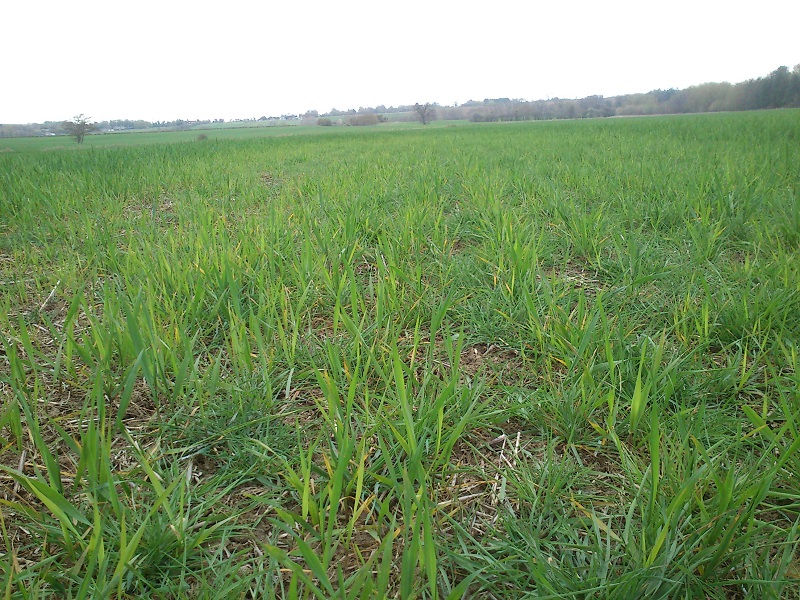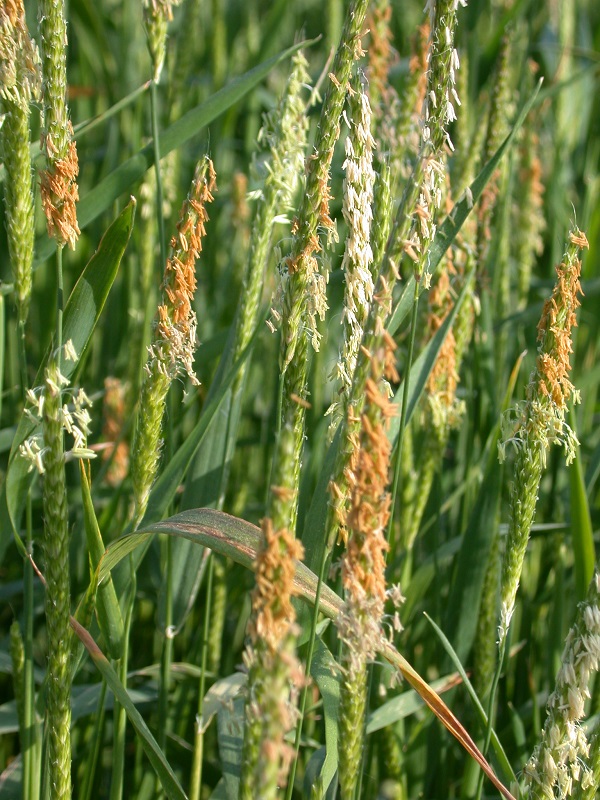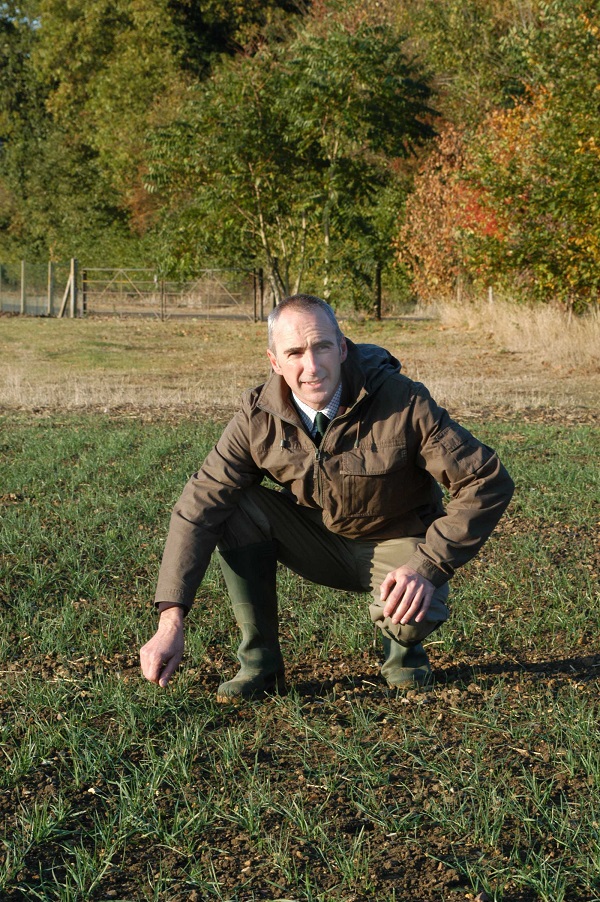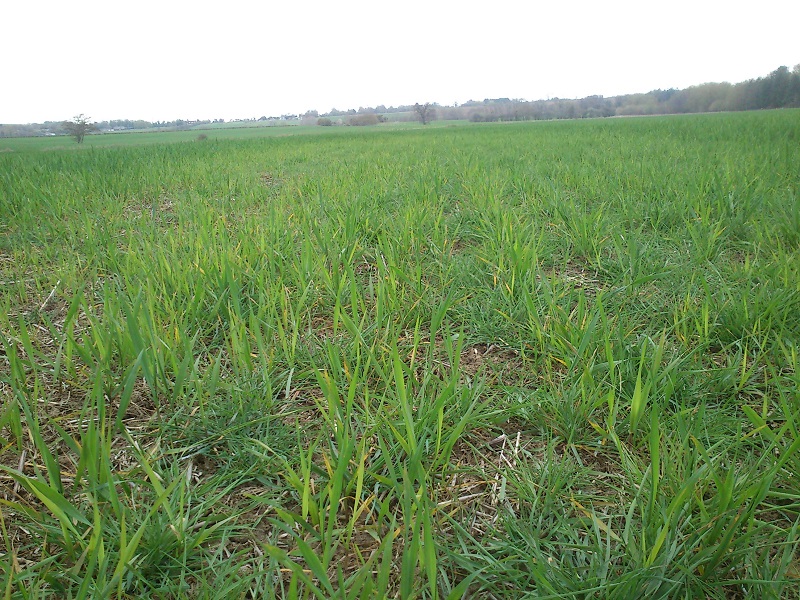Download article

There’s talk that autumn residuals are running out of steam and we’re set for a spring of high weed pressure. Is it just hype or will growers need to find deep pockets to cover spring herbicides this year? CPM finds out.
Blackgrass that did get through the pre-em just hasn’t stopped growing.
By Lucy de la Pasture
Reading the agricultural news often makes for depressing reading in the spring as there are always predictions of problems ahead. But something growers and agronomists are well practised at is dealing with whatever the season throws at them. And for many, 2016 has begun with the headache of big blackgrass in cereal crops where it was too wet to get post-emergence herbicides on.

It helps to put a financial value on the legacy of leaving the blackgrass poorly controlled in the crop.
There’s no disputing that it’s been a relatively wet and mild winter overall, so is it right to assume that this had an effect on autumn residuals? Possibly, but not necessarily, is the view from Gordon Anderson-Taylor of Bayer.
“Excessive rain could have affected the residuality and the mild conditions may have caused quicker breakdown of herbicides. But the biggest factor to consider when looking at the performance of applied herbicides, is that there has been a prolonged germination of blackgrass, with blackgrass still emerging throughout Dec and Jan,” he explains.
“Growers with livestock know that the grass has continued to grow throughout the winter and the majority of grassweeds have as well, resulting in some big blackgrass in crops. We’re seeing this especially where drilling was delayed and growers weren’t able to get on with their Atlantis (iodosulfuron-methyl-sodium+ mesosulfuron-methyl).”
But on the plus side, pre-emergence treatments worked well, according to Gordon Anderson-Taylor. “Crops went in well in the autumn with good seedbeds and adequate moisture for pre-emergence herbicides to work. Blackgrass came up at the same time as the crop in many situations, resulting in good levels of pre-em control,” he says.

Pre-emergence treatments have made a massive contribution to grassweed control this autumn, notes Gordon Anderson-Taylor.
In the Bayer weed-screen work, pre-em treatments have made a massive contribution to grassweed control this autumn. “Control has been 60-80% using Liberator (flufenacet+ diflufenican) alone, while stacking partners add between 5-10% to the level of control achieved,” explains Gordon Anderson-Taylor.
“There are differences between stacking partners, with DFF proving to be a valuable and cost-effective partner option. Using it in a mixture with Defy (prosulfocarb) or in sequence with Avadex (tri-allate) also seem to be performing very well,” he says.
“The screening work shows the importance of getting Liberator on at the correct timing. Its best performance is when applied pre-emergence of the weed and as application is delayed there’s a big loss in efficacy.”
It’s a situation that’s been echoed in reports from the field, with Agrovista’s technical manager, Mark Hemmant, confirming that pre-em treatments have generally done a pretty reasonable job. “The problem we’re having is that the soil temperature only briefly dropped below 6°C at the end of Jan and blackgrass that did get through the pre-em just hasn’t stopped growing.”
Lincs-based AICC agronomist, Peter Brumpton, was also pleased with the results of pre-ems last autumn. He used Liberator plus DFF as a pre or early post-em treatment, as well as in sequence with Avadex.
“Pre-em sprays were generally well timed and where residual was topped up with a post-em treatment, blackgrass control is acceptable. Where there wasn’t the opportunity to get Atlantis on, blackgrass is now getting quite big and I’m currently assessing fields (late Jan) and deciding what to do,” he says.
The recommended post-em timing for treating blackgrass with Atlantis is when the weed has 1-3 leaves. That’s because enhanced metabolic resistance (EMR) is the main problem and the bigger the blackgrass gets, then the easier it is for the EMR mechanism to overcome the effects of the Atlantis, explains Mark Hemmant.
Gordon Anderson-Taylor agrees that historically the advice has been to treat with Atlantis in the autumn but the move to later drilling where blackgrass is a problem and a robust pre-em spray programme has tended to push the autumn season into the New Year.
“Generally blackgrass plants are still small in Jan and Feb but not this year so it’s important to be prepared to take the earliest opportunity to get Atlantis on and focus on the areas of most concern.”
Something to watch out for is areas of fields that are still under stress after waterlogging, Mark Hemmant points out. “Blackgrass tends to be worst in the wettest parts of fields and it’s really important that the blackgrass is actively growing when the Atlantis is applied if you want to give it the best chance to work. If it’s not growing, then hold off for a few days even though it needs to go on sooner rather than later.”
In the Bayer weed screen, post-emergence applications of Atlantis have been useful even on tough strains of blackgrass, says Gordon Anderson-Taylor. “In the weed screen we look at Atlantis applied alone, without a pre-em beforehand, and this autumn it was offering in the region of 50% control.”
But the big question growers with big blackgrass are currently facing is will Atlantis work? Peter Brumpton reckons it’s hard to know what the right thing to do is when you may get control in the range of 10-50%.
Difficult decision
Deciding whether it’s better to cut your losses is always a difficult decision. “If you’re not going to get a decent degree of control, is it better in the long term to bite the bullet, destroy the crop and the blackgrass and either put in a spring crop or leave fallow?” he asks.
Strutt & Parker’s Jock Willmott believes growers need to be realistic when deciding whether a crop is viable this spring. “The most important thing with blackgrass is to look at potential seed return. If blackgrass is present in fields at levels that aren’t tolerable now, then there’s not a lot to be done that’ll make levels tolerable at harvest,” he says.
“How well Atlantis will work can only be assessed by looking at the field history and success of previous control. Walk the fields, understand the levels of blackgrass and talk through all the possible options. Any element of control will reduce seed return, the burning question being: ‘is 10-20% going to reduce it enough?’”
One option may be to take out the worst areas with blackgrass infestation, usually wet patches, headlands or odd tramlines, he suggests. “Once the difficult decision has been made, you don’t usually regret burning off early and may actually benefit in the long run.”
According to an ADAS survey in 2015, 33,000ha of winter wheat was sprayed off because of poorly controlled blackgrass, resulting in total crop loss. With the wheat price dropping below £100/t in Feb for the first time, economics need to be firmly in mind when making difficult decisions, reckons Jock Willmott.
“If you’re looking at blackgrass populations and consider their potential for seed return, it helps to put a financial value on the legacy of leaving the blackgrass poorly controlled in the crop. When you look at the crop from this perspective, it can give you the confidence to burn it off.”
To make the concept of seed return more tangible, ADAS research consultant Dr Sarah Cook, believes it’s helpful to look at the potential of a blackgrass population in the spring when assessing fields. Populations of 10 plants/m² are considered high enough to consider a more brutal approach to management.
“According to a joint ADAS/BASF research project, we found that if you have 10 blackgrass plants/m² now, that’ll give you approximately 100 heads/m² at harvest. In terms of blackgrass seeds, that’s a potential of 100 million seeds/ha and enough to fill 80% of a tonne bag.
“To help put that figure in context, a very rough average sowing rate for winter wheat would use one and a half tonne bags for a 10ha field. For a blackgrass population of 10 plants/m², you’ve a potential seed return of eight tonne bags of blackgrass seed,” she explains.
If the decision to destroy the crop is made, then any cultivation decisions need to bear in mind where the blackgrass seed is likely to be within the soil, advises Jock Willmott. “The last thing you want to do is mix in blackgrass seed through the profile. If the soil is wet, then leave it fallow and stale seedbed thereafter to keep on top of any newly germinating blackgrass.”
It’s not just blackgrass that has stolen a march this winter, ryegrasses and bromes are also well advanced in many fields, says Stuart Jackson of Dow. Bromes are a particular issue in Scotland, while high ryegrass populations may be problematic in Yorks and the west of England.
“We’ve seen that where residual herbicide programmes were missed or not robust enough, grassweeds have grown strongly. The larger the weeds, the harder they’ll be to control so these need to be treated as a priority,” he says.
Broadway Star (florasulam+ pyroxsulam) or Unite (flupyrsulfuron-methyl+ pyroxsulam) are the best option for ryegrass and brome, believes Peter Brumpton, and will also tackle a wide range of broadleaf weeds that may have escaped an autumn treatment.
“Effective control of blackgrass and bromes can be achieved up to mid-tillering, while for ryegrass treatment is needed before GS29, though the smaller the weed the better,” adds Stuart Jackson.




